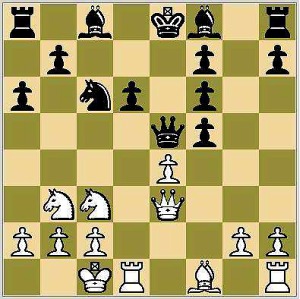A draw in the 11th game at the world championships last Wednesday was enough for Viswanathan Anand to retain his title.
SO IT came to pass that Viswanathan Anand did not require a 12th game to retain his world chess championship crown. After the loss in the 10th game, both he and Vladimir Kramnik played just one more to end the match.
 Indian chess world champion Viswanathan Anand.
Indian chess world champion Viswanathan Anand.
Though this game was drawn, it was not without some exciting skirmishes. For the first and only time in the match, Anand deviated from the d4 opening and played his usual e4 game.
However, Kramnik was ready with his reply, a rare choice of the Sicilian Defence which soon developed into the Richter Rauzer line of a Najdorf variation. The Richter Rauzer can lead to some of the most violent games of chess, with both players jostling for the initiative, the attack and the counter-attack.
This game was no different. By the 13th move, followers of the game were already on the edge of their seats. Nine moves later, the queens were forced off the board.
Another two moves, Kramnik stretched out his hand to offer a draw and then began shaking Anand’s hand profusely. I couldn’t be more impressed by the sincerity of his action.
Last week, I was writing about how Anand could be coping with the psychological pressures at the half-way stage of the match. If you were him, what would you do when you have taken a commanding three-point lead?
Coast to victory with easy draws? Fight for more wins? Would his opponent throw caution to the wind and start taking risks in his games? How would he then react if he were to lose a game?
In a post-match interview with the Indian newspaper DNA, Anand’s wife Aruna revealed the extent of the psychological pressure and preparations.
“After he lost his 10th game I went back stage and Anand looked very calm. The only thing he said was that he should nail (the match) in the next game. The team (Anand’s team) also just decided to forget the game. They had expected one game at least where Kramnik would get in his novelty and the move Re1 was very difficult to solve on the board.”

So the loss of one game was anticipated by Anand’s team. They were prepared for it psychologically but they just couldn’t predict when it would happen.
In a separate interview with the same newspaper, Anand admitted that the loss drained him and the waiting period between this loss and the next game drained him.
“The last three days have been very intense. I could have finished the game three days earlier. In fact, the last half point took me as much effort as the first six points. I had to think of the defeat one whole day. It was a slow boil. It was a huge relief when Kramnik offered me the draw today.”
That’s the mind of Anand the chess player for you. This week, I’m taking a look at the final game of the match.
White: Viswanathan Anand (2783)
Black: Vladimir Kramnik (2772)
1. e4 c5
This was one of the few surprises of the match: Kramnik’s response to the e4 opening. Would he use his normal, solid Petroff Defence? If he did, I think a win in the game would be even further away. So seeing him choose the Sicilian meant that he was ready to fight and risk all in this game.
2. Nf3 d6 3. d4 cxd4 4. Nxd4 Nf6 5. Nc3 a6 6. Bg5 e6 7. f4 Qc7 8. Bxf6 gxf6 9. f5 Qc5 10. Qd3 Nc6 11. Nb3
Up to this point, it seems that there’s still nothing new. Those commentators who could rely on chess databases said that there was a documented game in this line as long ago as 1982. But were the players on stage aware of it? Anyway, Kramnik made the first deviation.
11. … Qe5 12. 0-0-0 exf5
An anti-positional move which wins Black a pawn but breaks up his pawn formation. It’s double-edged because there are holes and outposts in his position and he still hasn’t castled his king to safety. Indeed, where can Black castle? Queen-side is debatable and king-side looks difficult too. Maybe, Black made the best choice to delay castling and keep the king in the centre for the moment.
13. Qe3
I like this move. White could have chosen many others but he chose this. The queen steps aside and clears the path for the rook, bishop and knight.
13. … Bg7 14. Rd5 Qe7 15. Qg3 Rg8 16. Qf4 fxe4 17. Nxe4 f5 18. Nxd6+ Kf8 19. Nxc8 Rxc8 20. Kb1 Qe1+ 21. Nc1 Ne7 22. Qd2
White didn’t have to play this. In fact, 22. Qd6 is stronger but it’s understandable that White wants to exchange off the queens. Anand was looking at the dynamics of the whole match and not just a single game. A draw would have suited him fine. No need to go all out for a win when a draw could achieve the same results, that is, keeping the chess crown.
22. … Qxd2 23. Rxd2 Bh6 24. Rf2 Be3 (½-½)
And that’s it. The game has ended and with it, so has the match.
